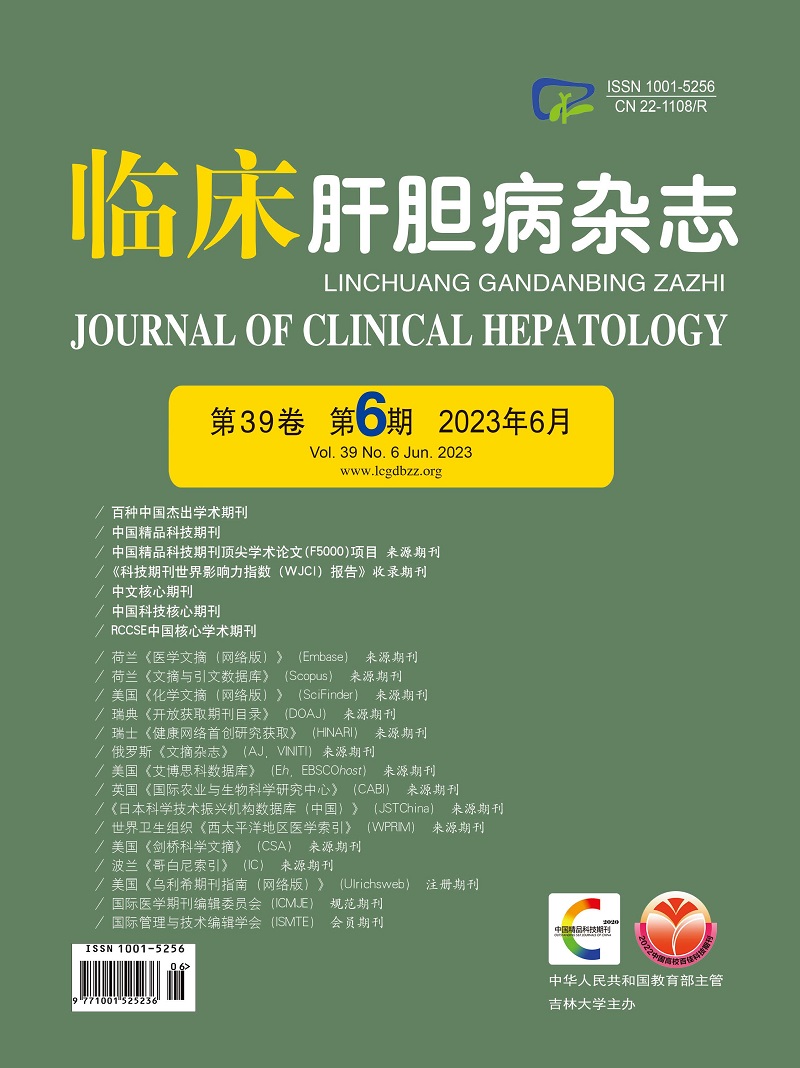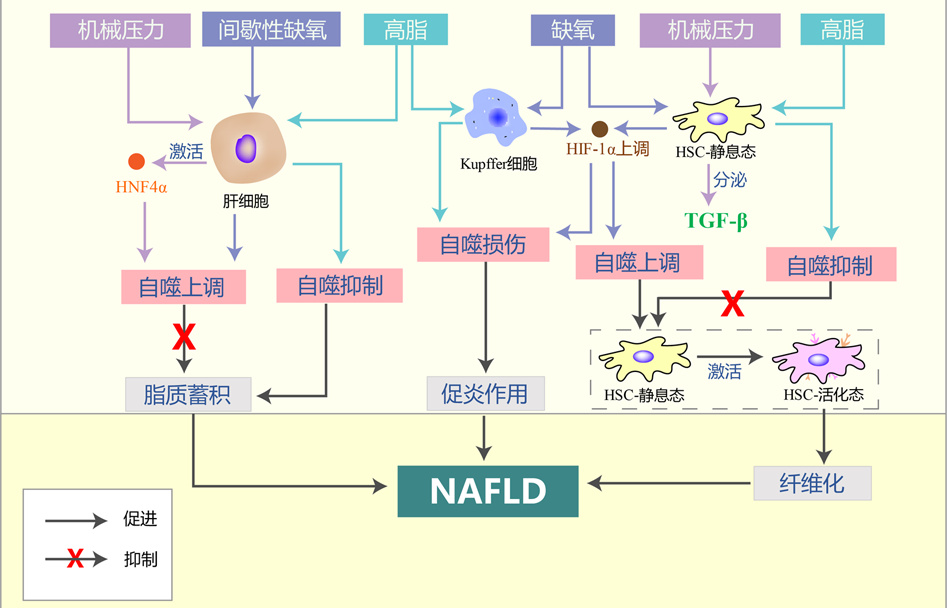| [1] |
RAVIKUMAR B, SARKAR S, DAVIES JE, et al. Regulation of mammalian autophagy in physiology and pathophysiology[J]. Physiol Rev, 2010, 90(4): 1383-1435. DOI: 10.1152/physrev.00030.2009. |
| [2] |
FILALI-MOUNCEF Y, HUNTER C, ROCCIO F, et al. The ménage à trois of autophagy, lipid droplets and liver disease [J]. Autophagy, 2022, 18(1): 50-72. DOI: 10.1080/15548627.2021.1895658. |
| [3] |
WANG L, KLIONSKY DJ, SHEN HM. The emerging mechanisms and functions of microautophagy[J]. Nat Rev Mol Cell Biol, 2023, 24(3): 186-203. DOI: 10.1038/s41580-022-00529-z. |
| [4] |
KIRKIN V, ROGOV VV. A diversity of selective autophagy receptors determines the specificity of the autophagy pathway[J]. Mol Cell, 2019, 76(2): 268-285. DOI: 10.1016/j.molcel.2019.09.005. |
| [5] |
TONG M, SAITO T, ZHAI P, et al. Mitophagy is essential for maintaining cardiac function during high fat diet-induced diabetic cardiomyopathy[J]. Circ Res, 2019, 124(9): 1360-1371. DOI: 10.1161/CIRCRESAHA.118.314607. |
| [6] |
FENG X, ZHANG H, MENG L, et al. Hypoxia-induced acetylation of PAK1 enhances autophagy and promotes brain tumorigenesis via phosphorylating ATG5[J]. Autophagy, 2021, 17(3): 723-742. DOI: 10.1080/15548627.2020.1731266. |
| [7] |
CZAJA MJ, DING WX, DONOHUE TM Jr, et al. Functions of autophagy in normal and diseased liver[J]. Autophagy, 2013, 9(8): 1131-1158. DOI: 10.4161/auto.25063. |
| [8] |
SOUZA MR, DINIZ MDE F, MEDEIROS-FILHO JE, et al. Metabolic syndrome and risk factors for non-alcoholic fatty liver disease[J]. Arq Gastroenterol, 2012, 49(1): 89-96. DOI: 10.1590/s0004-28032012000100015. |
| [9] |
OTA H, FUJITA Y, YAMAUCHI M, et al. Relationship between intermittent hypoxia and type 2 diabetes in sleep apnea syndrome[J]. Int J Mol Sci, 2019, 20(19): 4756. DOI: 10.3390/ijms20194756. |
| [10] |
MILIĆ S, LULIĆ D, ŠTIMAC D. Non-alcoholic fatty liver disease and obesity: biochemical, metabolic and clinical presentations[J]. World J Gastroenterol, 2014, 20(28): 9330-9337. DOI: 10.3748/wjg.v20.i28.9330. |
| [11] |
LIAN CY, ZHAI ZZ, LI ZF, et al. High fat diet-triggered non-alcoholic fatty liver disease: A review of proposed mechanisms[J]. Chem Biol Interact, 2020, 330: 109199. DOI: 10.1016/j.cbi.2020.109199. |
| [12] |
RODRIGUES SG, MONTANI M, GUIXÉ-MUNTET S, et al. Patients with signs of advanced liver disease and clinically significant portal hypertension do not necessarily have cirrhosis[J]. Clin Gastroenterol Hepatol, 2019, 17(10): 2101-2109. e1. DOI: 10.1016/j.cgh.2018.12.038. |
| [13] |
MENDES FD, SUZUKI A, SANDERSON SO, et al. Prevalence and indicators of portal hypertension in patients with nonalcoholic fatty liver disease[J]. Clin Gastroenterol Hepatol, 2012, 10(9): 1028-1033. e2. DOI: 10.1016/j.cgh.2012.05.008. |
| [14] |
LONG Y, NIU Y, LIANG K, et al. Mechanical communication in fibrosis progression[J]. Trends Cell Biol, 2022, 32(1): 70-90. DOI: 10.1016/j.tcb.2021.10.002. |
| [15] |
FU Y, ZHANG N, TANG W, et al. Chronic intermittent hypoxia contributes to non-alcoholic steatohepatitis progression in patients with obesity[J]. Hepatol Int, 2022, 16(4): 824-834. DOI: 10.1007/s12072-022-10347-2. |
| [16] |
VIGLINO D, JULLIAN-DESAYES I, MINOVES M, et al. Nonalcoholic fatty liver disease in chronic obstructive pulmonary disease[J]. Eur Respir J, 2017, 49(6): 1601923. DOI: 10.1183/13993003.01923-2016. |
| [17] |
PIGUET AC, STROKA D, ZIMMERMANN A, et al. Hypoxia aggravates non-alcoholic steatohepatitis in mice lacking hepatocellular PTEN[J]. Clin Sci (Lond), 2009, 118(6): 401-410. DOI: 10.1042/CS20090313. |
| [18] |
SINGH R, KAUSHIK S, WANG Y, et al. Autophagy regulates lipid metabolism[J]. Nature, 2009, 458(7242): 1131-1135. DOI: 10.1038/nature07976. |
| [19] |
DONG S, JIA C, ZHANG S, et al. The REGγ proteasome regulates hepatic lipid metabolism through inhibition of autophagy[J]. Cell Metab, 2013, 18(3): 380-391. DOI: 10.1016/j.cmet.2013.08.012. |
| [20] |
LIU K, ZHAO E, ILYAS G, et al. Impaired macrophage autophagy increases the immune response in obese mice by promoting proinflammatory macrophage polarization[J]. Autophagy, 2015, 11(2): 271-284. DOI: 10.1080/15548627.2015.1009787. |
| [21] |
MOORE MP, CUNNINGHAM RP, MEERS GM, et al. Compromised hepatic mitochondrial fatty acid oxidation and reduced markers of mitochondrial turnover in human NAFLD[J]. Hepatology, 2022, 76(5): 1452-1465. DOI: 10.1002/hep.32324. |
| [22] |
YAMADA T, MURATA D, ADACHI Y, et al. Mitochondrial stasis reveals p62-mediated ubiquitination in parkin-independent mitophagy and mitigates nonalcoholic fatty liver disease[J]. Cell Metab, 2018, 28(4): 588-604. e5. DOI: 10.1016/j.cmet.2018.06.014. |
| [23] |
LI R, XIN T, LI D, et al. Therapeutic effect of Sirtuin 3 on ameliorating nonalcoholic fatty liver disease: The role of the ERK-CREB pathway and Bnip3-mediated mitophagy[J]. Redox Biol, 2018, 18: 229-243. DOI: 10.1016/j.redox.2018.07.011. |
| [24] |
ZHOU T, CHANG L, LUO Y, et al. Mst1 inhibition attenuates non-alcoholic fatty liver disease via reversing Parkin-related mitophagy[J]. Redox Biol, 2019, 21: 101120. DOI: 10.1016/j.redox.2019.101120. |
| [25] |
MEDERACKE I, HSU CC, TROEGER JS, et al. Fate tracing reveals hepatic stellate cells as dominant contributors to liver fibrosis independent of its aetiology[J]. Nat Commun, 2013, 4: 2823. DOI: 10.1038/ncomms3823. |
| [26] |
BLANER WS, O'BYRNE SM, WONGSIRIROJ N, et al. Hepatic stellate cell lipid droplets: a specialized lipid droplet for retinoid storage[J]. Biochim Biophys Acta, 2009, 1791(6): 467-473. DOI: 10.1016/j.bbalip.2008.11.001. |
| [27] |
HONG Y, LI S, WANG J, et al. In vitro inhibition of hepatic stellate cell activation by the autophagy-related lipid droplet protein ATG2A[J]. Sci Rep, 2018, 8(1): 9232. DOI: 10.1038/s41598-018-27686-6. |
| [28] |
THOEN LF, GUIMARÃES EL, DOLLÉ L, et al. A role for autophagy during hepatic stellate cell activation[J]. J Hepatol, 2011, 55(6): 1353-1360. DOI: 10.1016/j.jhep.2011.07.010. |
| [29] |
KIM JS, NITTA T, MOHUCZY D, et al. Impaired autophagy: A mechanism of mitochondrial dysfunction in anoxic rat hepatocytes[J]. Hepatology, 2008, 47(5): 1725-1736. DOI: 10.1002/hep.22187. |
| [30] |
WANG D, SI D, LI G, et al. Dysregulated autophagic activity induced in response to chronic intermittent hypoxia contributes to the pathogenesis of NAFLD[J]. Front Physiol, 2022, 13: 941706. DOI: 10.3389/fphys.2022.941706. |
| [31] |
LU Y, BIAN J, KAN H, et al. Intermittent hypoxia preconditioning protects WRL68 cells against oxidative injury: Involvement of the PINK1/Parkin-mediated mitophagy regulated by nuclear respiratory factor 1[J]. Mitochondrion, 2021, 59: 113-122. DOI: 10.1016/j.mito.2021.04.012. |
| [32] |
CUI F, HU HF, GUO J, et al. The effect of autophagy on chronic intermittent hypobaric hypoxia ameliorating liver damage in metabolic syndrome rats[J]. Front Physiol, 2020, 11: 13. DOI: 10.3389/fphys.2020.00013. |
| [33] |
ZHAN L, HUANG C, MENG XM, et al. Hypoxia-inducible factor-1alpha in hepatic fibrosis: A promising therapeutic target[J]. Biochimie, 2015, 108: 1-7. DOI: 10.1016/j.biochi.2014.10.013. |
| [34] |
NATH B, SZABO G. Hypoxia and hypoxia inducible factors: diverse roles in liver diseases[J]. Hepatology, 2012, 55(2): 622-633. DOI: 10.1002/hep.25497. |
| [35] |
WANG X, de CARVALHO RIBEIRO M, IRACHETA-VELLVE A, et al. Macrophage-specific hypoxia-inducible factor-1α contributes to impaired autophagic flux in nonalcoholic steatohepatitis[J]. Hepatology, 2019, 69(2): 545-563. DOI: 10.1002/hep.30215. |
| [36] |
ZHANG X, HUANG C, LI X, et al. HFD and HFD-provoked hepatic hypoxia act as reciprocal causation for NAFLD via HIF-independent signaling[J]. BMC Gastroenterol, 2020, 20(1): 366. DOI: 10.1186/s12876-020-01515-5. |
| [37] |
DENG J, HUANG Q, WANG Y, et al. Hypoxia-inducible factor-1alpha regulates autophagy to activate hepatic stellate cells[J]. Biochem Biophys Res Commun, 2014, 454(2): 328-334. DOI: 10.1016/j.bbrc.2014.10.076. |
| [38] |
JIN Y, BAI Y, NI H, et al. Activation of autophagy through calcium-dependent AMPK/mTOR and PKCθ pathway causes activation of rat hepatic stellate cells under hypoxic stress[J]. FEBS Lett, 2016, 590(5): 672-682. DOI: 10.1002/1873-3468.12090. |
| [39] |
MUELLER S. Does pressure cause liver cirrhosis? The sinusoidal pressure hypothesis[J]. World J Gastroenterol, 2016, 22(48): 10482-10501. DOI: 10.3748/wjg.v22.i48.10482. |
| [40] |
BAFFY G. Origins of portal hypertension in nonalcoholic fatty liver disease[J]. Dig Dis Sci, 2018, 63(3): 563-576. DOI: 10.1007/s10620-017-4903-5. |
| [41] |
DUPONT N, CODOGNO P. Autophagy transduces physical constraints into biological responses[J]. Int J Biochem Cell Biol, 2016, 79: 419-426. DOI: 10.1016/j.biocel.2016.08.021. |
| [42] |
CLAUDE-TAUPIN A, CODOGNO P, DUPONT N. Links between autophagy and tissue mechanics[J]. J Cell Sci, 2021, 134(17): jcs258589. DOI: 10.1242/jcs.258589. |
| [43] |
YANG J, LIANG J, ZHENG Y, et al. Hepatic polarization accelerated by mechanical compaction involves HNF4 activation[J]. Biomed Res Int, 2020, 2020: 8016306. DOI: 10.1155/2020/8016306. |
| [44] |
LEE DH, PARK SH, AHN J, et al. Mir214-3p and Hnf4a/Hnf4α reciprocally regulate Ulk1 expression and autophagy in nonalcoholic hepatic steatosis[J]. Autophagy, 2021, 17(9): 2415-2431. DOI: 10.1080/15548627.2020.1827779. |
| [45] |
SERA T, SUMII T, FUJITA R, et al. Effect of shear stress on the migration of hepatic stellate cells[J]. In Vitro Cell Dev Biol Anim, 2018, 54(1): 11-22. DOI: 10.1007/s11626-017-0202-x. |
| [46] |
SAKATA R, UENO T, NAKAMURA T, et al. Mechanical stretch induces TGF-beta synthesis in hepatic stellate cells[J]. Eur J Clin Invest, 2004, 34(2): 129-136. DOI: 10.1111/j.1365-2362.2004.01302.x. |
| [47] |
CASTAGNARO S, CHRISAM M, CESCON M, et al. Extracellular collagen VI has prosurvival and autophagy instructive properties in mouse fibroblasts[J]. Front Physiol, 2018, 9: 1129. DOI: 10.3389/fphys.2018.01129. |
| [48] |
TOTARO A, ZHUANG Q, PANCIERA T, et al. Cell phenotypic plasticity requires autophagic flux driven by YAP/TAZ mechanotransduction[J]. Proc Natl Acad Sci U S A, 2019, 116(36): 17848-17857. DOI: 10.1073/pnas.1908228116. |
| [49] |
LEE YA, NOON LA, AKAT KM, et al. Autophagy is a gatekeeper of hepatic differentiation and carcinogenesis by controlling the degradation of Yap[J]. Nat Commun, 2018, 9(1): 4962. DOI: 10.1038/s41467-018-07338-z. |








 DownLoad:
DownLoad: